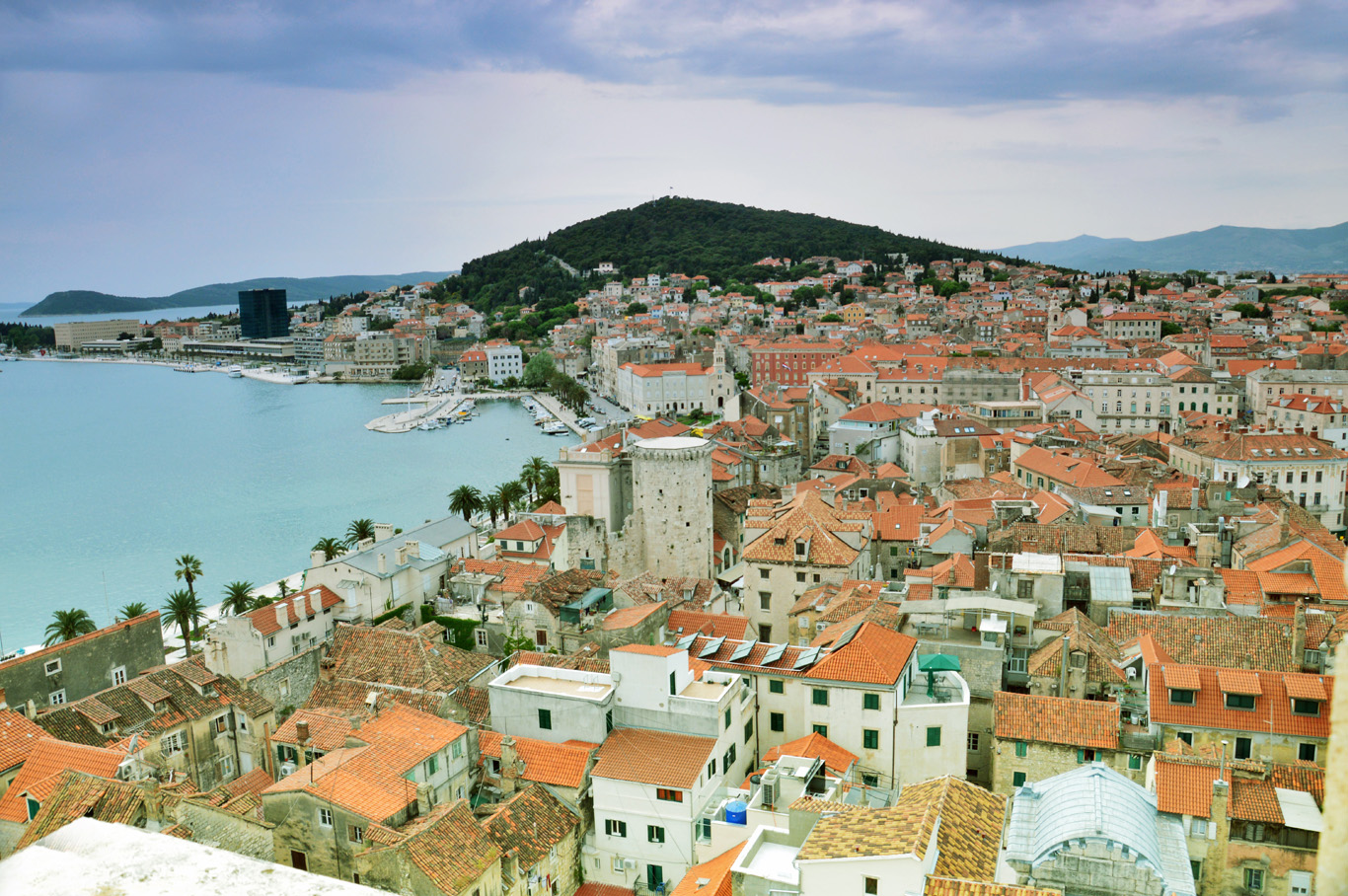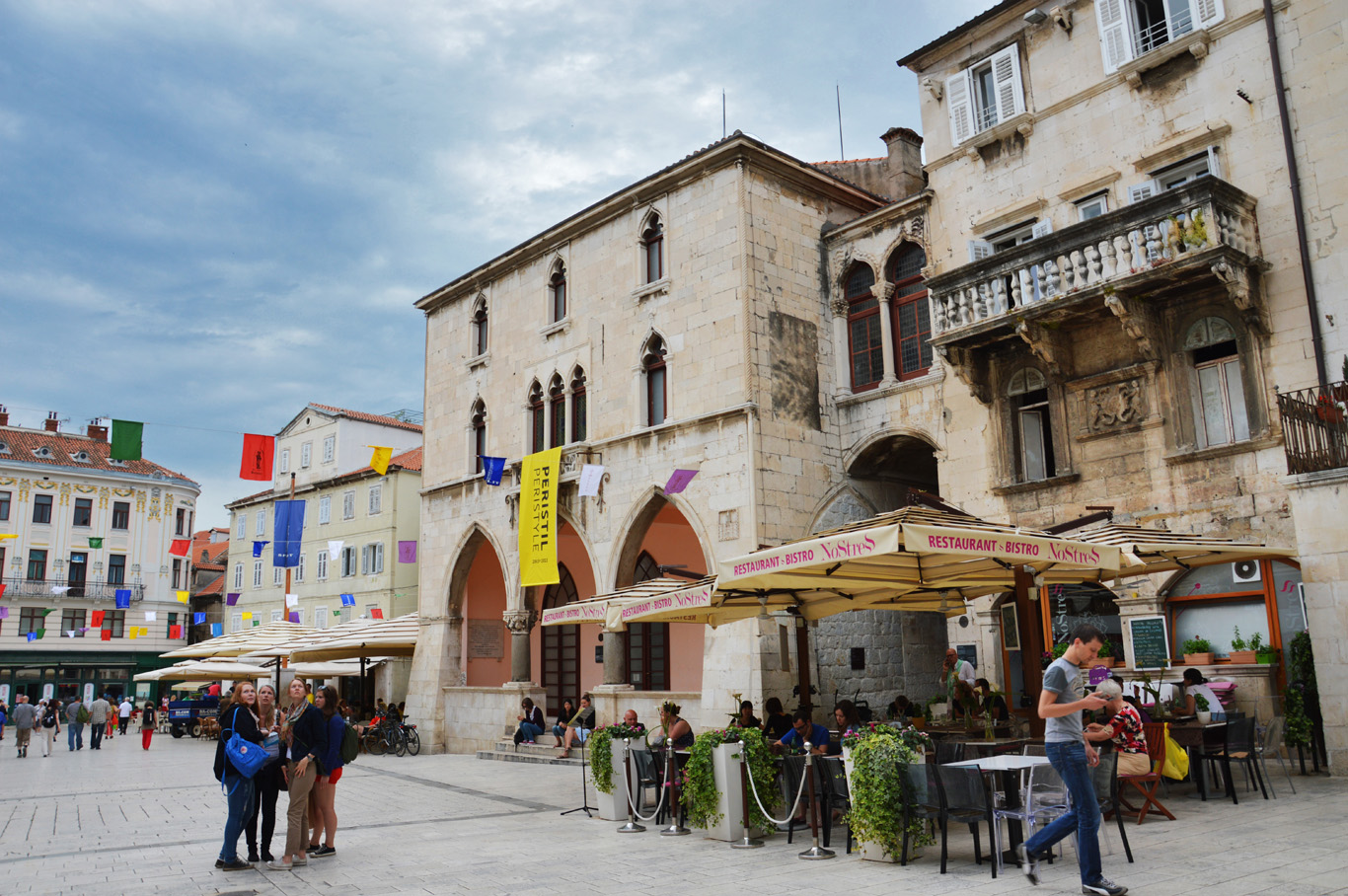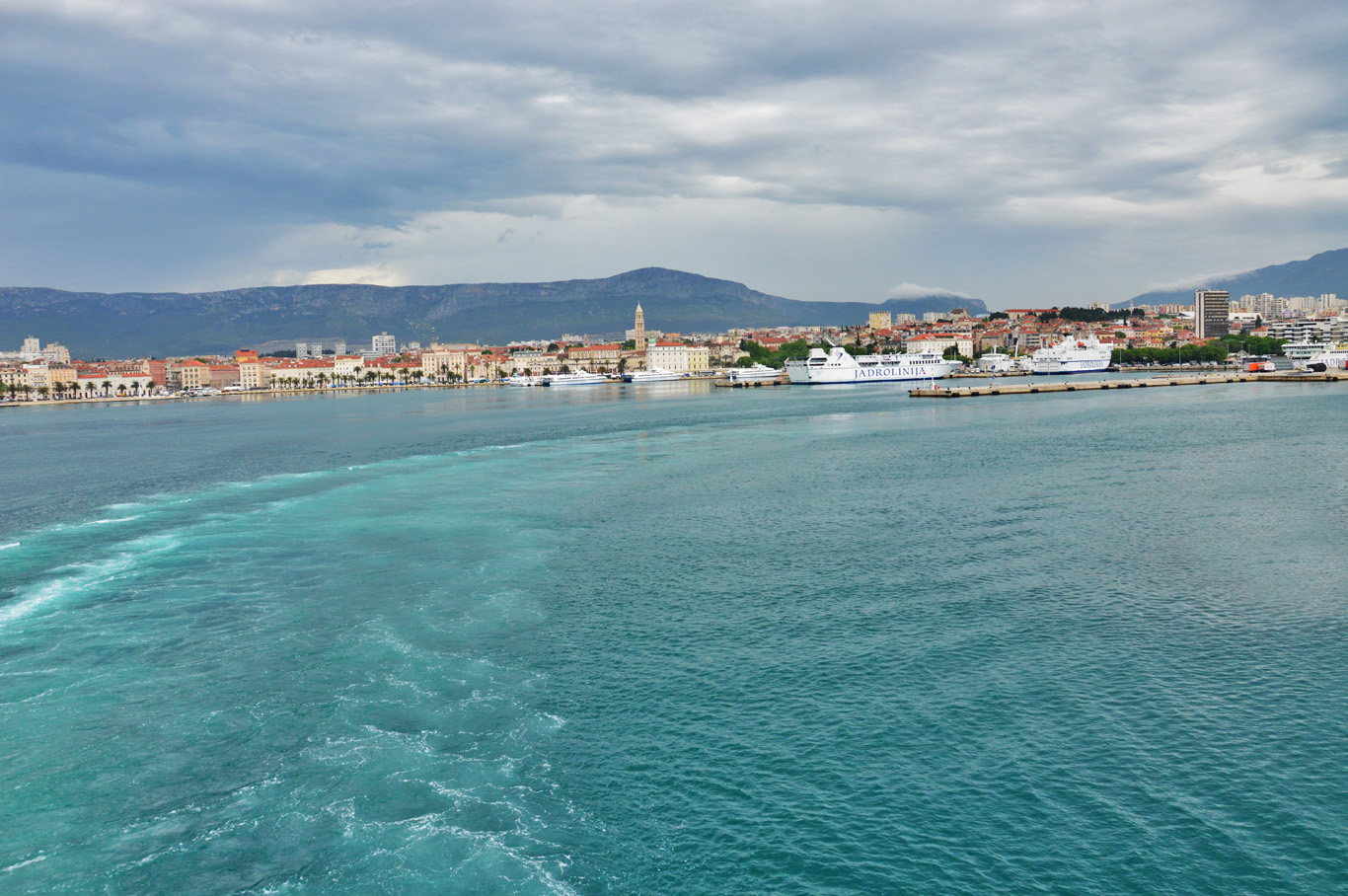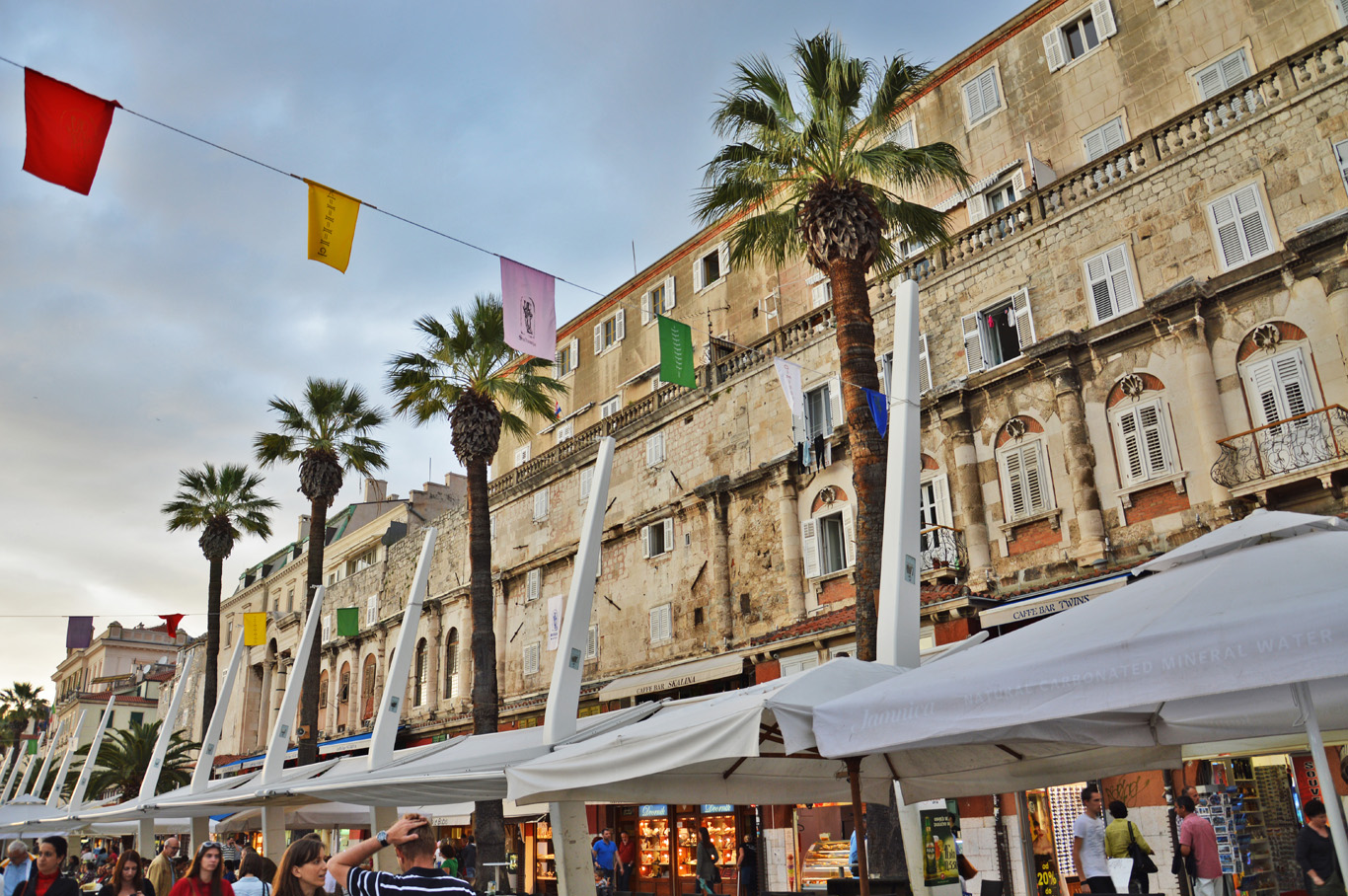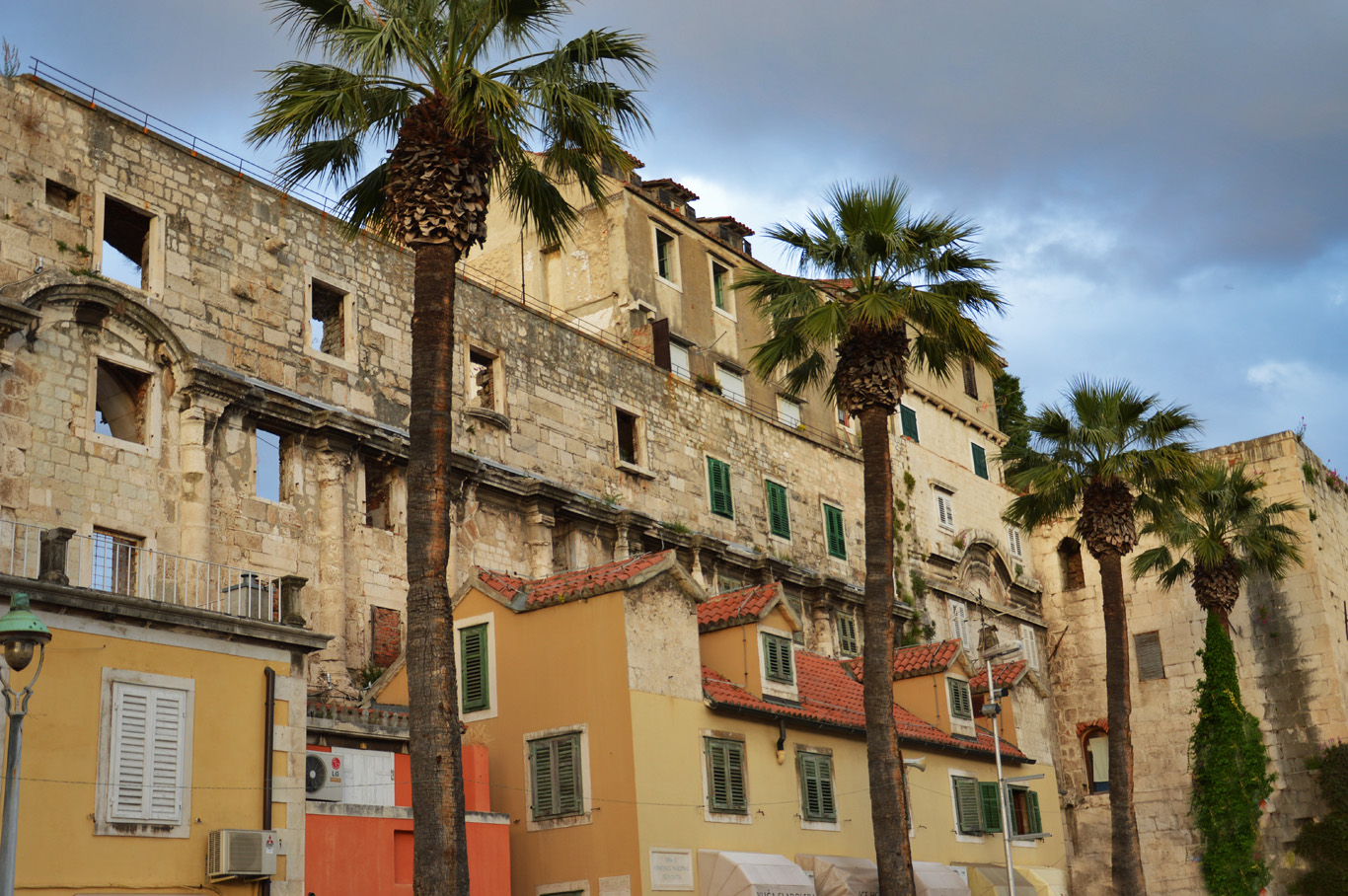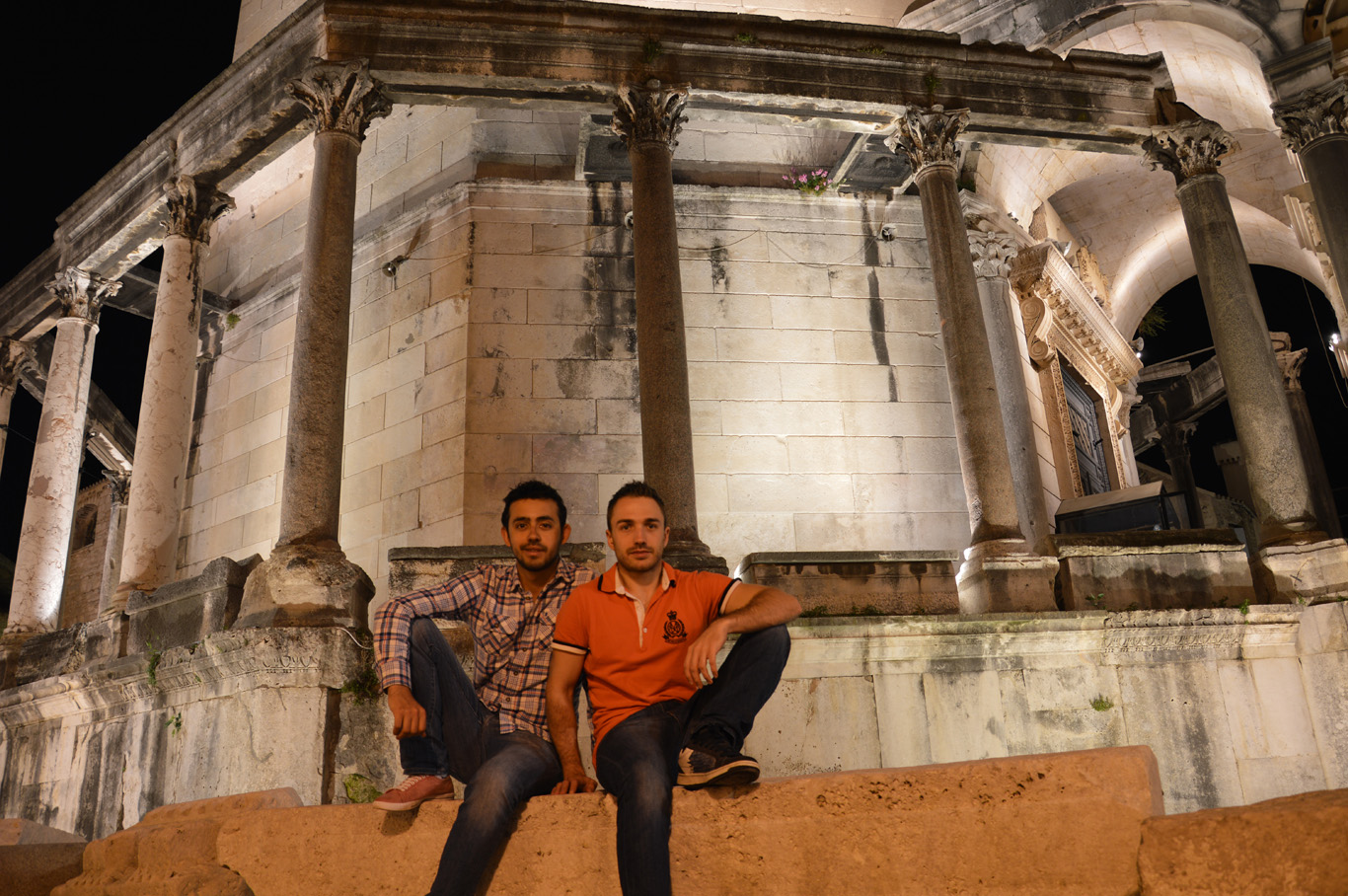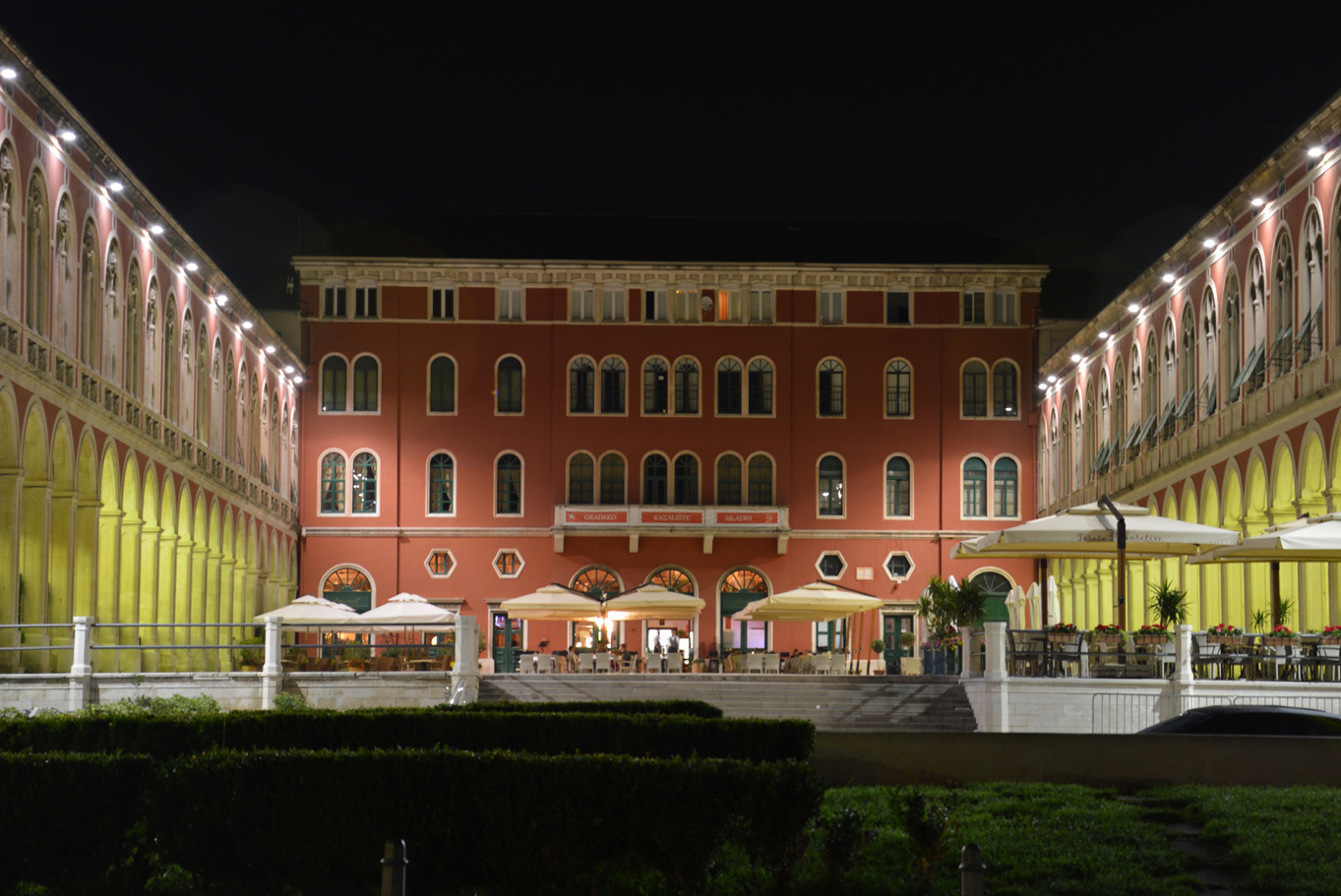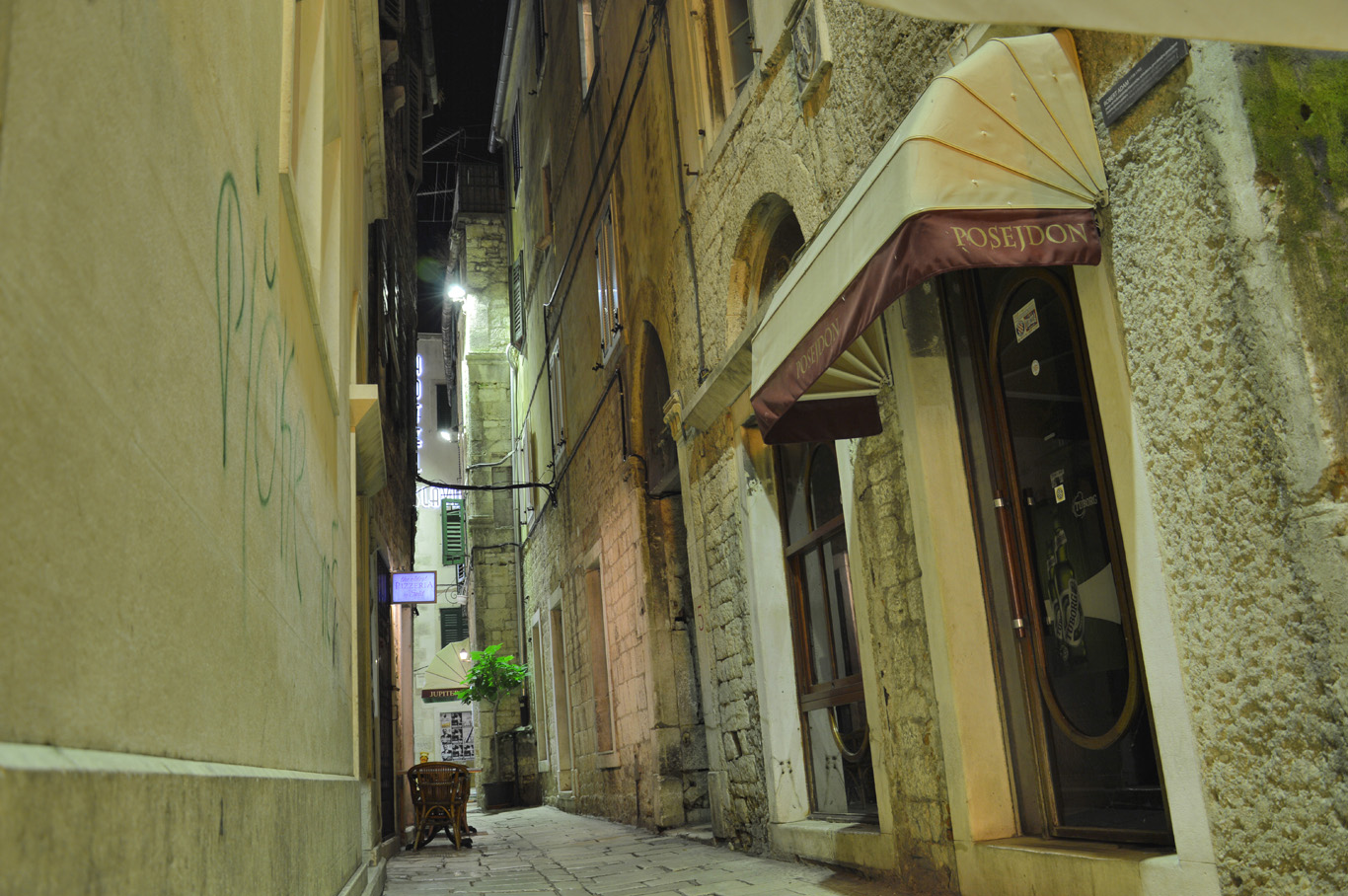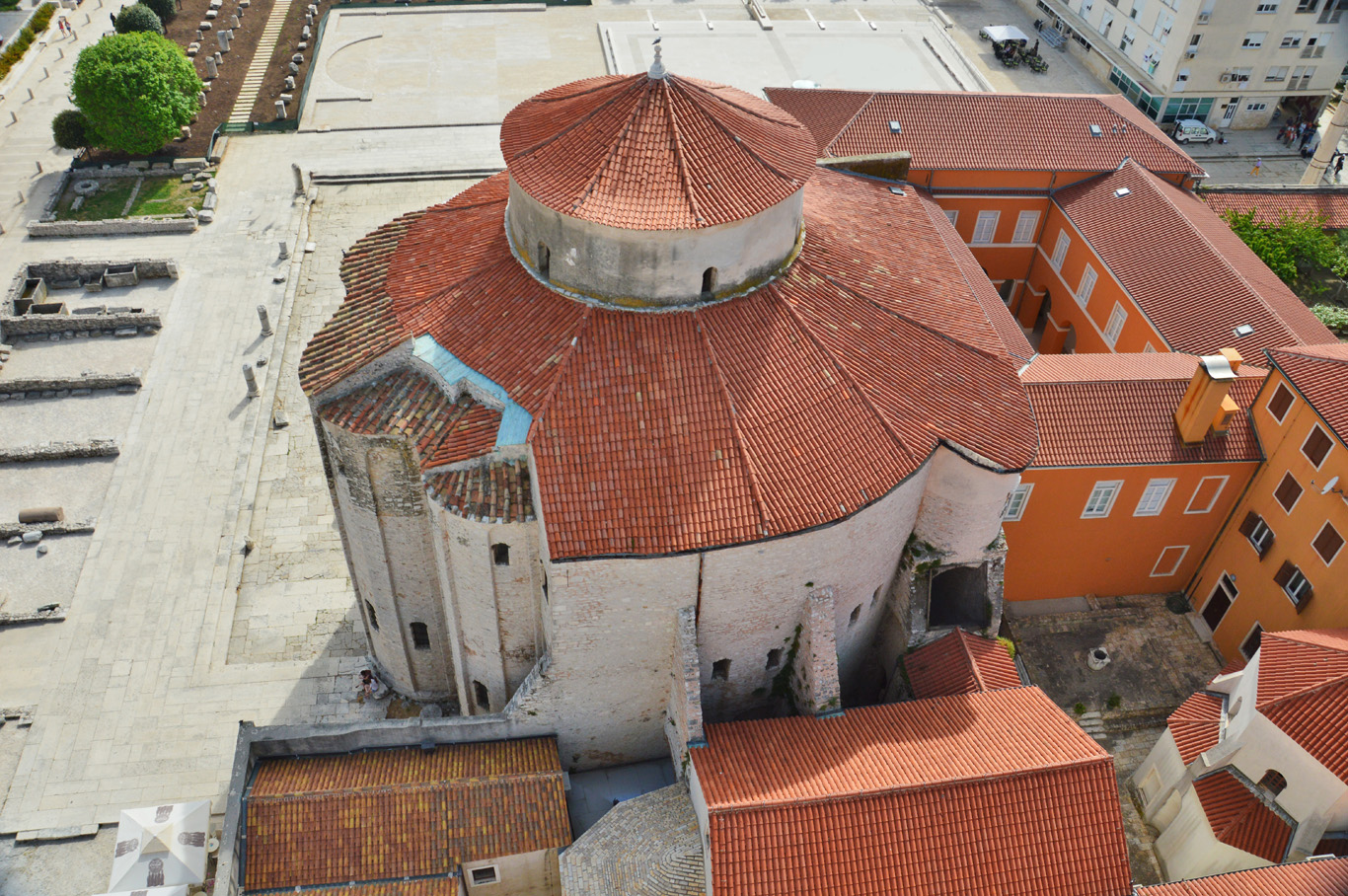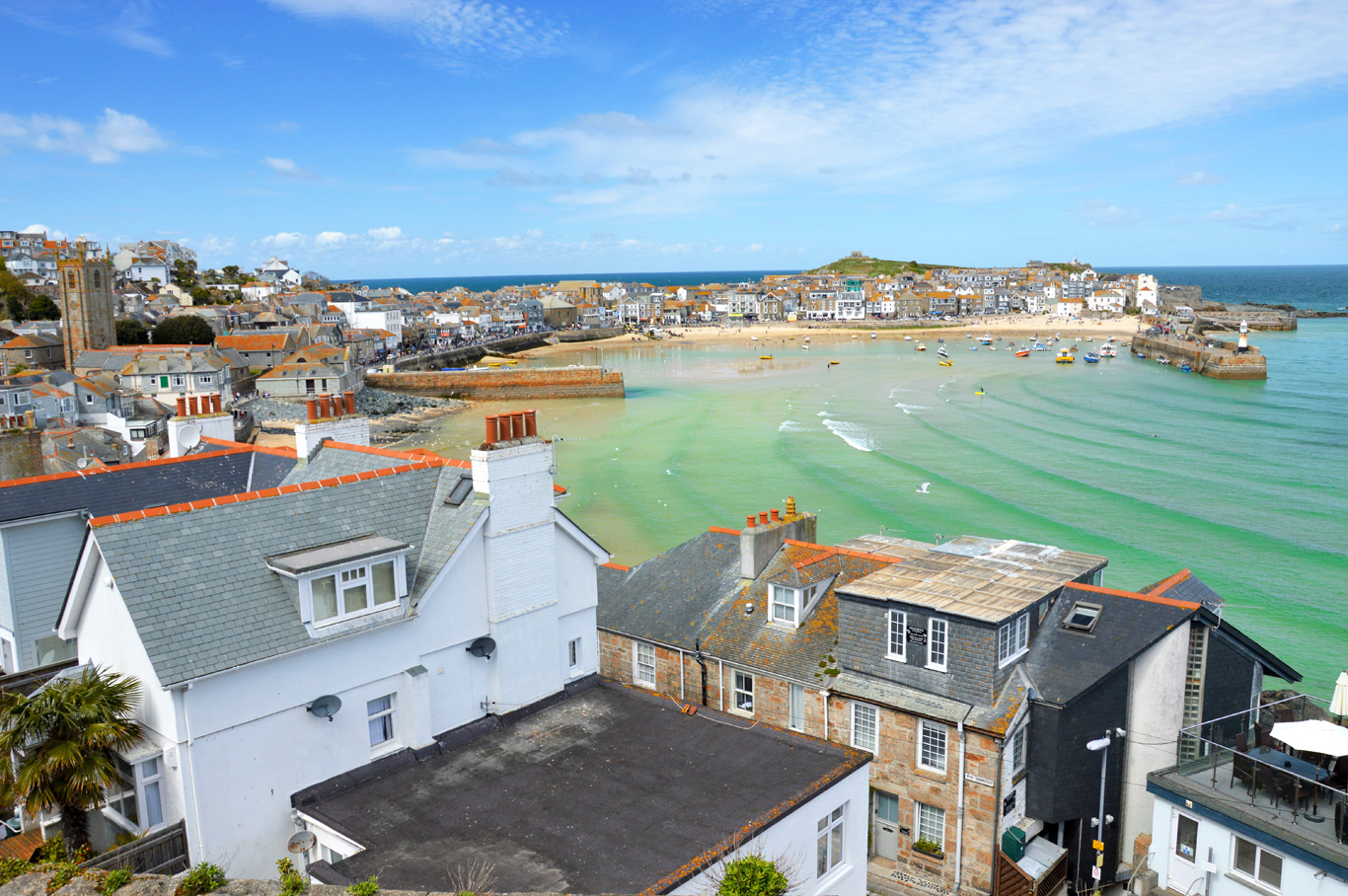Split, an ancient city in modern day Croatia, after experiencing some turbulent events of the past wars, now, when the peace has come, witnessed a rapid economic growth, mainly thanks to great improvements of tourist infrastructure. It's the second largest city in Croatia (after Zagreb), and the largest in Dalmatia. Since 2000s, when Croatia invested in tourism industry, Split has become one of the most popular cities to visit on the Adriatic Coast. It owes its charm to the ancient city center situated now where the Diocletian's Palace once stood. Strolling down the narrow streets paved with the white stone from nearby Brac Island can take you back in time almost two thousand years to the era of the Roman Empire.
Split, Croatia, view from the Bell Tower
Split, Croatia
How to get to Split
Split is easily accessibly by air, road or sea. The airport is located 24 kilometers (15 miles) away from the city. It's served by major European Airlines that connect Split with many cities such as Rome, London, Amsterdam and Frankfurt.
Entry to Croatia is easy and citizens from most of the countries do not need a visa or ESTA.
To get to Split from the airport, you can take public bus number 37 and 38 (at a very low price) or a direct bus Pleso Prijevoz - 30 HRK (4 EUR / 5 USD) one way or 40 HRK (5 EUR / 7 USD).
Timetable here:
http://www.plesoprijevoz.hr/split.html
It is also possible to take a speed boat taxi that will take you to Split or Dalmatian Islands (Brac, Hvar, Solta, Vis, Kocula). More info here:
http://www.adriatic-express.com/speed-taxi-boat.html
It's easy to reach Split from other Croatian cities like Zadar, Dubrovnik or Zagreb. Buses usually run hourly. I came to Split from Plitvice Lakes National Park, the bus station is located near the entrance. The bus services from Plitvice, however, are not as frequent as from the major cities.
It's also possible to take a train from other Croatian cities but it's slower (although cheaper) than a bus and not as frequent.
There are also occasional ferries that connect Croatia with Italian coast on the other side of the Adriatic Sea (3 times per week).
Split, Croatia - Old Town
Split, Croatia - Old Town
Split, Croatia - Old Town
Split, Croatia - Old Town
Split, Croatia - Old Town
Split, Croatia - Old Town
Split, Croatia - Old Town
Split in Croatia, Marjan Hill
Split, Croatia - View from a ferry to Brac Island
Brief history of Split
The oldest known settlements in the area date back to the sixth century BC. Later, in the second century BC the region was conquered by the Romans. They founded the province of Dalmatia with the capital in the city of Salona (which was later leveled to the ground by Avars and Slaves in the seventh century AD - the ruins of Salona are located around 5 kilometers (3 miles) from Split).
The palace, which was ordered to be built in the nearby to Salona port of Spaletum (the Latin name of Split) by the Emperor Diocletion, was to be his retirement place. The construction resembled a fortress with huge defensive walls and was (and still is until this day) architecturally magnificent. After Salona was destroyed, the refugees settled down in the palace creating their own settlement inside.
Croats arrived in the area in the seventh century and integrated with the local people. In the eleventh century, Split was incorporated into the Croatian Kingdom and in the fifteenth century fell under the rule of Venetian Republic for almost four centuries. The city developed greatly during that time, establishing many important trade routs with the Ottoman Empire. After the downfall of Venetian Republic, Split was taken over by Napoleon for a brief time and later became a part of the Empire of Austria until the first world war.
After the war Split was annexed to the Kingdom of Yugoslavia, but not for long. A few years later, during the second world war it was occupied by Italy, also only for the duration of the war. When the second world war ended, it joined the sovereign Socialist Republic of Croatia which was the part of the Socialist Federal Republic of Yugoslavia. During that time, the city experienced a rapid demographic expansion and economic growth. After the fall of the Soviet Union, in 1991 Croatia became independent and the Yugoslav wars tore the country. Fortunately, Split and Dalmatia didn't suffer too much damage. Nowadays, Split is a modern, European city, getting more and more popular year by year.
The Promenade in Split
Fragment of the original walls of Diocletian's Palace
The Promenade in Split - Fragments of the original walls of Diocletian's Palace
The Promenade in Split
What to see in Split
Split is a lovely city, perfect for a weekend trip or as a gateway to the Islands in the region. Just by walking down the streets, you can visit the entire old town and most important places. You will admire the architecture and the beauty of the city and its location squeezed in between bare mountains and the sea.
Split has peacocks roaming free around the old town (but not in the strict center), I spotted a few of them, beside the apartment I rented (double room for 13 EUR per person per night), they were flying from one roof to another.
Although Split is most popular during the summer months, if you want to enjoy the city more, without the never ending crowds of tourists, visit it in the spring or fall. The temperatures will be milder and walking and hiking more pleasurable.
Old Town and the Riva Promenade
The Old Town in Split is beautiful and very distinctive due to the contrast between the red roofs and white rock used for building. It is a mix of old and new architecture, walking around you can spot the Roman, medieval and then Soviet influences. The city is literally built onto the old, original foundations from the fourth century. There are many ancient monuments in the old town, still well preserved to this day.
The Riva Promenade is filled with restaurants, cafes and markets. If you are hungry you can grab a delicious slice of freshly made pizza for as little as 10 HRK (1.30 EUR / 1.80 USD). The promenade connects the ferry port from which you can take a boat to one of the Dalmatian islands with the Marjan hill - where you can find an amazing park and the ZOO with great views over the whole city.
Restaurants and cafes are everywhere, if you don't want to overpay, you can find some nice, local restaurant hidden a bit outside of the main tourist areas. I found one and paid less than 10 EUR (13 USD) for a great meal.
The Promenade in Split
Split, view from Marjan Hill
The Promenade in Split
The Promenade in Split
Sunset in Split
Diocletian's Palace
Diocletian's Palace (built in 305 AD) is the most important site of Split. Located in the heart of old town, it was the retirement place for the Roman Emperor Diocletian. It was surrounded by thick defense walls, parts of which are preserved until today. You can still admire its great architecture which will make you wonder how great it must have been at the times of its prosperity. After the Slavs invaded the region in the seventh century, Romans from nearby regions moved to the abandoned palace and settled there creating a mini city with its own rights within the palace walls. Nowadays, there are still shops, restaurants and even some homes in there.
Eastern Gate
Eastern gate is one of the four ways to enter the palace. It is still surprisingly well preserved with many of the original arches and details intact. Close to the gate, there are a few markets where you can purchase local products. Right after you cross the gate, you will notice the Bell Tower of the Cathedral of Saint Domnius as well as the ruins of the roman columns dating back to the 4th century. The gate is beautifully integrated into the newer part of the city.
The Eastern Gate seen from Diocletian's Palace
The Cathedral of Saint Domnius in Split
Split, Old Town at night
Split, Croatia - The Promenade at night
Split, Croatia - The Promenade at night
Split, Old Town at night
Split, Old Town at night
The Eastern Gate in Split
The Cathedral of Saint Domnius and the peristyle
The cathedral of Saint Domnius, located at the Easter gate in front of the peristyle of the Diocletian's Palace consists of three parts, each from different ages. The oldest part - the Emperor Diocletian's Mausoleum dates back to the third century, later, in the eighteenth century, the chorus was added.
The Bell Tower was originally built in the thirteenth century but it was later restored in the twentieth century and the original Romanesque style was lost. It is possible to enter the tower, the views of the old town's red roofs and the sea from the top are amazing.
The peristyle, the Roman style square right beside the cathedral, with some original columns and parts of the pavement dating back to antiquity is truly magnificent and will lead you, through another gate, to the promenade.
Prokurative Square
Prokurative Square is situated just a few steps away from the promenade, near the entrance to Marjan hill. It's based on Saint Mark's Square in Venice and was designed by a Venetian architect. It was built in the nineteenth century and it serves as a venue for art festivals of all sorts. You can also find some cozy cafes and restaurants here.
Marjan Hill
Marjan Hill is the hill overlooking Split, the port, the coast and the mountains. It has been continuously used as a park for recreational purposes since the third century AD which makes it probably one of the oldest parks in the world. The hill easy to climb and the observation points provide some spectacular views.
Split, Croatia - view from Marjan Hill
Split, Diocletian Palace, The Peristyle
Split, Diocletian's Palace - view over the Eastern Gate
The Cathedral of Saint Domnius, The Bell Tower in Split
Diocletian's Palace in Split
The Peristyle, Diocletian Palace
Diocletian's Palace in Split
Prokurative Square in Split
Split, Croatia, Old Town at night
Split, Croatia, Old Town at night
Split, Croatia, Old Town at night
Split, Croatia, Old Town at night
Split, Croatia, Old Town at night
If you liked this article, you can also download it via the GPSmyCity app - you will be able to gain access to the guide, which will direct you to all the attractions described above, even if you're offline. Download it here.
Related Posts
Copying without permission is not allowed. If you wish to use any of the site's content (photos or text) or work with us, please contact us.
We welcome questions, advice, support or criticism. However, spam comments will be removed.


